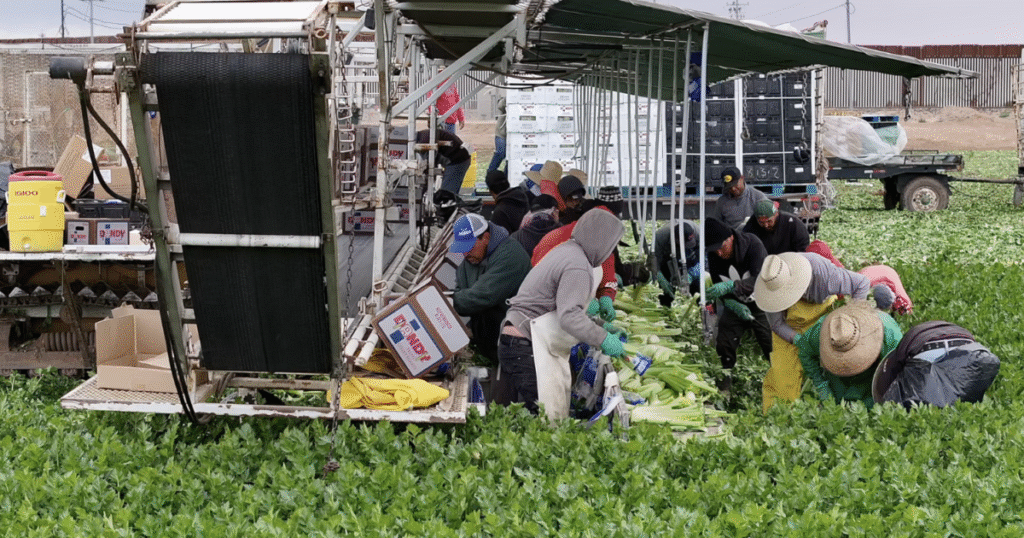Yuma’s Agricultural Landscape: A Blend of Challenges and Contributions
Yuma, Arizona, benefits from a long growing season, easy access to the Colorado River, and plentiful sunshine. Yet, crops don’t just appear on their own—you really need people to bring them to life. The proximity to labor from Mexico plays a crucial role in supporting Yuma’s agricultural industry.
In Yuma’s celery fields, just a stone’s throw from the southern border, dozens of Mexican farm workers diligently harvest vegetables that make their way to grocery stores in just days. While Yuma grapples with immigration challenges, the reliance on these immigrant workers is vital for the local economy.
“That’s a tough job,” remarks farm worker Jose Aguilera, highlighting the physical demands of working long hours. “You have to be strong to work 10-12 hours a day.”
Alfonso Urena, who has spent nearly ten years in this labor, travels back to Mexico each night to his family in San Luis Rio Colorado. “We have to work as hard as we can to help our families live better,” he shares. Interestingly, Urena hasn’t worked alongside American laborers in all his time in the fields.
“We cannot bring in H2A unless we can prove that we can’t find domestic help,” says Matt McGuire, who oversees farming operations in Yuma Valley at JV Smith Farms. This statement points to the legal framework that allows Urena and many immigrant workers to be in Yuma. They secure lawful employment through the H2A visa, earning over $17 per hour.
The H2A visa is designed for farmers who struggle to find Americans willing to work in the fields. “The H2A workers on the harvest side, especially, make it possible,” McGuire explains.
However, farming along the border is not without its hurdles. During peak immigration crises, individuals crossing the border often walked through fields, complicating food safety and affecting farmers’ profits. “I don’t think you want them to walk on the kitchen table,” McGuire comments, noting that such incidents can damage crops and inflate costs.
Still, he emphasizes the positives of working in Yuma Valley, stating, “We work hard to get people vegetables. We aim for the lowest costs possible and take great pride in our output.”
Back at the celery fields, the work persists despite the ongoing scrutiny surrounding immigration. “To be legally working here is what we want. We’re not doing anything wrong; we’re just here, working. When the season ends, we’ll return to Mexico,” Urena concludes.
Related: New Border Policy will lead to a significant reduction in illegal border crossings in Yuma







